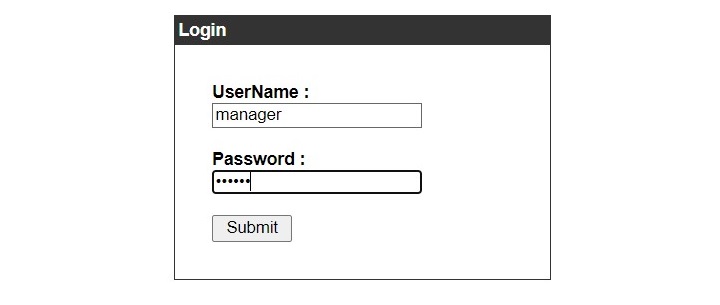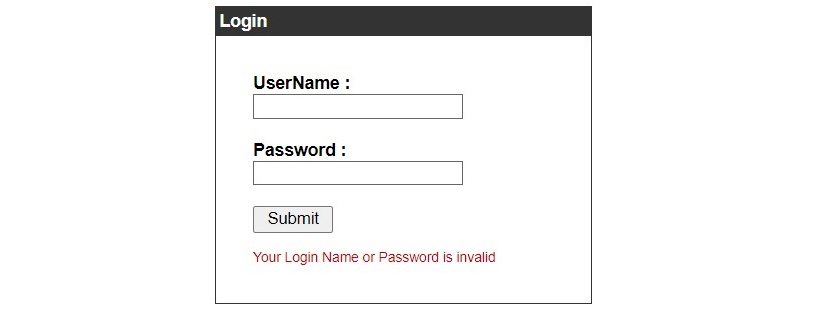
- PHP - Home
- PHP - Roadmap
- PHP - Introduction
- PHP - Installation
- PHP - History
- PHP - Features
- PHP - Syntax
- PHP - Hello World
- PHP - Comments
- PHP - Variables
- PHP - Echo/Print
- PHP - var_dump
- PHP - $ and $$ Variables
- PHP - Constants
- PHP - Magic Constants
- PHP - Data Types
- PHP - Type Casting
- PHP - Type Juggling
- PHP - Strings
- PHP - Boolean
- PHP - Integers
- PHP - Files & I/O
- PHP - Maths Functions
- PHP - Heredoc & Nowdoc
- PHP - Compound Types
- PHP - File Include
- PHP - Date & Time
- PHP - Scalar Type Declarations
- PHP - Return Type Declarations
- PHP - Operators
- PHP - Arithmetic Operators
- PHP - Comparison Operators
- PHP - Logical Operators
- PHP - Assignment Operators
- PHP - String Operators
- PHP - Array Operators
- PHP - Conditional Operators
- PHP - Spread Operator
- PHP - Null Coalescing Operator
- PHP - Spaceship Operator
- PHP Control Statements
- PHP - Decision Making
- PHP - If…Else Statement
- PHP - Switch Statement
- PHP - Loop Types
- PHP - For Loop
- PHP - Foreach Loop
- PHP - While Loop
- PHP - Do…While Loop
- PHP - Break Statement
- PHP - Continue Statement
- PHP Arrays
- PHP - Arrays
- PHP - Indexed Array
- PHP - Associative Array
- PHP - Multidimensional Array
- PHP - Array Functions
- PHP - Constant Arrays
- PHP Functions
- PHP - Functions
- PHP - Function Parameters
- PHP - Call by value
- PHP - Call by Reference
- PHP - Default Arguments
- PHP - Named Arguments
- PHP - Variable Arguments
- PHP - Returning Values
- PHP - Passing Functions
- PHP - Recursive Functions
- PHP - Type Hints
- PHP - Variable Scope
- PHP - Strict Typing
- PHP - Anonymous Functions
- PHP - Arrow Functions
- PHP - Variable Functions
- PHP - Local Variables
- PHP - Global Variables
- PHP Superglobals
- PHP - Superglobals
- PHP - $GLOBALS
- PHP - $_SERVER
- PHP - $_REQUEST
- PHP - $_POST
- PHP - $_GET
- PHP - $_FILES
- PHP - $_ENV
- PHP - $_COOKIE
- PHP - $_SESSION
- PHP File Handling
- PHP - File Handling
- PHP - Open File
- PHP - Read File
- PHP - Write File
- PHP - File Existence
- PHP - Download File
- PHP - Copy File
- PHP - Append File
- PHP - Delete File
- PHP - Handle CSV File
- PHP - File Permissions
- PHP - Create Directory
- PHP - Listing Files
- Object Oriented PHP
- PHP - Object Oriented Programming
- PHP - Classes and Objects
- PHP - Constructor and Destructor
- PHP - Access Modifiers
- PHP - Inheritance
- PHP - Class Constants
- PHP - Abstract Classes
- PHP - Interfaces
- PHP - Traits
- PHP - Static Methods
- PHP - Static Properties
- PHP - Namespaces
- PHP - Object Iteration
- PHP - Encapsulation
- PHP - Final Keyword
- PHP - Overloading
- PHP - Cloning Objects
- PHP - Anonymous Classes
- PHP Web Development
- PHP - Web Concepts
- PHP - Form Handling
- PHP - Form Validation
- PHP - Form Email/URL
- PHP - Complete Form
- PHP - File Inclusion
- PHP - GET & POST
- PHP - File Uploading
- PHP - Cookies
- PHP - Sessions
- PHP - Session Options
- PHP - Sending Emails
- PHP - Sanitize Input
- PHP - Post-Redirect-Get (PRG)
- PHP - Flash Messages
- PHP AJAX
- PHP - AJAX Introduction
- PHP - AJAX Search
- PHP - AJAX XML Parser
- PHP - AJAX Auto Complete Search
- PHP - AJAX RSS Feed Example
- PHP XML
- PHP - XML Introduction
- PHP - Simple XML Parser
- PHP - SAX Parser Example
- PHP - DOM Parser Example
- PHP Login Example
- PHP - Login Example
- PHP - Facebook Login
- PHP - Paypal Integration
- PHP - MySQL Login
- PHP Advanced
- PHP - MySQL
- PHP.INI File Configuration
- PHP - Array Destructuring
- PHP - Coding Standard
- PHP - Regular Expression
- PHP - Error Handling
- PHP - Try…Catch
- PHP - Bugs Debugging
- PHP - For C Developers
- PHP - For PERL Developers
- PHP - Frameworks
- PHP - Core PHP vs Frame Works
- PHP - Design Patterns
- PHP - Filters
- PHP - JSON
- PHP - Exceptions
- PHP - Special Types
- PHP - Hashing
- PHP - Encryption
- PHP - is_null() Function
- PHP - System Calls
- PHP - HTTP Authentication
- PHP - Swapping Variables
- PHP - Closure::call()
- PHP - Filtered unserialize()
- PHP - IntlChar
- PHP - CSPRNG
- PHP - Expectations
- PHP - Use Statement
- PHP - Integer Division
- PHP - Deprecated Features
- PHP - Removed Extensions & SAPIs
- PHP - PEAR
- PHP - CSRF
- PHP - FastCGI Process
- PHP - PDO Extension
- PHP - Built-In Functions
PHP - MySQL Login
MySQL is a popular choice as a backend database for PHP powered web applications. In this chapter, we shall learn to develop a login page for a PHP application that authenticates the given username and password.
You should have a web server having PHP and MySQL installed for experimenting with the example discussed in this chapter. The bundled binaries of Apache, PHP and MySQL (MariaDB) in the form of XAMPP for your operating system can be easily installed.
Before running the example code, you should have a MySQL database called mydb in which there must be a table called admin. You can use following SQL script to create the table and insert a test data
use mydb;
CREATE TABLE `admin` (
`username` varchar(10) NOT NULL,
`passcode` varchar(10) NOT NULL
) ENGINE=InnoDB DEFAULT CHARSET=utf8mb4 COLLATE=utf8mb4_general_ci;
INSERT INTO `admin` (`username`, `passcode`) VALUES
('guest', 'abc123'),
('manager', 'secret'),
('user', 'test');
ALTER TABLE `admin`
ADD PRIMARY KEY (`username`);
COMMIT;
The first part of PHP login application is to establish database connection object. We use myqli API to obtain connection object. Save following code as "config.php"
Config.php
<?php
define('DB_SERVER', 'localhost');
define('DB_USERNAME', 'root');
define('DB_PASSWORD', '');
define('DB_DATABASE', 'mydb');
$db = mysqli_connect(DB_SERVER,DB_USERNAME,DB_PASSWORD,DB_DATABASE);
?>
This PHP script is called inside the login script. It presents the user with a HTML form to enter username and password. In case the form is submitted, PHP runs a SELECT query to retrieve a row in the admin table where the username and passcode matches with the user inputs.
$myusername = mysqli_real_escape_string($db,$_POST['username']);
$mypassword = mysqli_real_escape_string($db,$_POST['password']);
$sql = "SELECT * FROM admin WHERE username = '$myusername' and passcode = '$mypassword'";
$result = mysqli_query($db,$sql);
$row = mysqli_num_rows($result);
If the row count is one, it indicates that the username and the password entered matches. The username is save to the $_SESSION variable and the browser is directed to welcome.php script.
Login.php
Save the following code as "login.php" −
<?php
include("config.php");
session_start();
$error='';
if($_SERVER["REQUEST_METHOD"] == "POST") {
// username and password sent from form
$myusername = mysqli_real_escape_string($db,$_POST['username']);
$mypassword = mysqli_real_escape_string($db,$_POST['password']);
$sql = "SELECT * FROM admin WHERE username = '$myusername' and passcode = '$mypassword'";
$result = mysqli_query($db,$sql);
$row = mysqli_num_rows($result);
$count = mysqli_num_rows($result);
if($count == 1) {
// session_register("myusername");
$_SESSION['login_user'] = $myusername;
header("location: welcome.php");
} else {
$error = "Your Login Name or Password is invalid";
}
}
?>
<html>
<head>
<title>Login Page</title>
<style type = "text/css">
body {
font-family:Arial, Helvetica, sans-serif;
font-size:14px;
}
label {
font-weight:bold;
width:100px;
font-size:14px;
}
.box {
border:#666666 solid 1px;
}
</style>
</head>
<body bgcolor = "#FFFFFF">
<div align = "center">
<div style = "width:300px; border: solid 1px #333333; " align = "left">
<div style = "background-color:#333333; color:#FFFFFF; padding:3px;"><b>Login</b></div>
<div style = "margin:30px">
<form action = "" method = "post">
<label>UserName :</label><input type = "text" name = "username" class = "box"/><br /><br />
<label>Password :</label><input type = "password" name = "password" class = "box" /><br/><br />
<input type = "submit" value = " Submit "/><br />
</form>
<div style = "font-size:11px; color:#cc0000; margin-top:10px"><?php echo $error; ?></div>
</div>
</div>
</div>
</body>
</html>
Session.php
The following is thesession.phpcode file. It checks if the session variable is set; then the user credentials will be assigned to the$login_sessionvariable. If not, the user is redirected back to thelogin.phpfile.
<?php
// Start the session
session_start();
if(!isset($_SESSION['login_user'])){
header("location: login.php");
die();
}
$login_session = $_SESSION['login_user'];
?>
Welcome.php
The "welcome.php" script gets invoked when the user is authenticated. It reads the session variable to display a welcome message.
<?php
include('session.php');
?>
<html>
<head>
<title>Welcome </title>
</head>
<body>
<h1>Welcome <?php echo $login_session; ?></h1>
<h2><a href = "logout.php">Sign Out</a></h2>
</body>
</html>
Logout.php
Finally, the logout script removes the destroys the session and redirects the user to the login page.
<?php
session_start();
if(session_destroy()) {
header("Location: login.php");
}
?>
To start the login application, visit "http://localhost/login.php"

Enter the username and password. On pressing the submit button, these inputs are checked against the rows in admin table. On success, you get the following message −

If the query doesnt fetch any matching row, the error message is displayed as follows −
